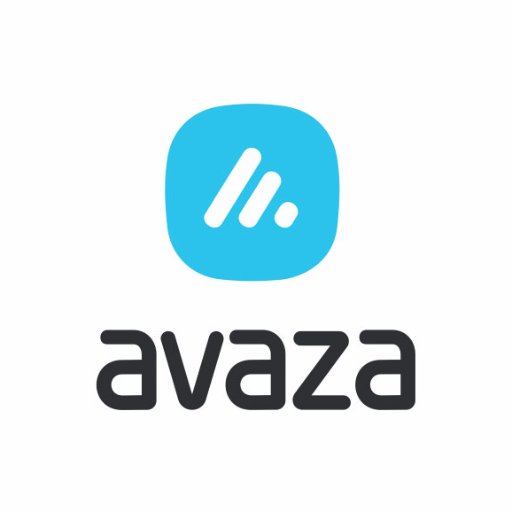The ART19 Content API conforms to the [JSON:API specification](http://jsonapi.org). API requests **MUST** use the HTTP Accept header: `Accept: application/vnd.api+json` API requests **MUST** be authenticated using the HTTP Authorization header: `Authorization: Token token="your-token", credential="your-credential"` ## General Notes Some query parameters use unencoded [ and ] characters simply for readability. Defaults, examples, and possible values are additionally rendered in double quotes for readability. In practice, query parameters should not have quotes around the values (e.g., `foo=bar` is valid, not `foo="bar"`), and both query parameter keys and values must be percent-encoded, per the requirements in [RFC 3986 § 3.4](https://tools.ietf.org/html/rfc3986#section-3.4). ## Rate Limiting In order to provide a fair distribution of available resources, all API calls are subject to rate limits. If you exceed the number of API calls per minute granted to your credential, a `429 Too Many Requests` error response will be returned. In that case, a `Retry-After` header MAY be included in the response, describing the number of seconds after which a request can be retried. If you run into a high number of 429 errors, please reach out to ART19 Support to adjust your rate limit. ### Example In the following example the request can be retried after waiting for 21 seconds: HTTP/1.1 429 Too Many Requests Content-Type: text/html Retry-After: 21 ## Pagination Requests to collection endpoints **SHOULD** provide pagination parameters. Some endpoints **REQUIRE** pagination parameters to be provided. Whenever pagination is provided, it **MUST** be valid. Failing to provide pagination when it is required or providing wrong or incomplete pagination always results in a `400 Bad Request` error response. The page numbering starts with `1` and the maximum page size (if not otherwise documented on an endpoint) is `100`. Pagination **MUST NOT** be specified if requesting a list of IDs (using an `ids[]` parameter). Providing invalid values for page number or page size, as well as providing only a page number or only a page size, is considered an error. Pagination is provided like this: `page[number]=1&page[size]=25` Responses conform to the [JSON:API specification's pagination section](https://jsonapi.org/format/#fetching-pagination) by including pagination links. Your requested page size will be carried into the pagination links. ## Sorting Requests to collection endpoints usually accept a `sort` parameter. Please refer to the [JSON:API Specification's sorting section](https://jsonapi.org/format/#fetching-sorting) for further details. ## Relationship Linking Currently, resources return all of their relationships, in no particular order, pursuant to how relationships should be returned [according to the JSON:API specification](https://jsonapi.org/format/#document-resource-object-relationships). Consumers of this API **MUST NOT** make assumptions about the order of these collections. Even though this data is not currently paginated, consumers **MUST** support paginating relationships per the JSON:API specification if this data is important for their application.
# Introduction The SearchLy API provides similarity searching based on song lyrics. # Operations The API allows for the `/similarity/by_song` operation, which allows clients to search the similarity for an existing song in the database. Also, the API has an additional `/similarity/by_content` endpoint which allows clients to search similarity given a free String input through a JSON request body. Additional `/song/search` operation is available for searching songs given a query String. # Endpoint The API endpoint for the SearchLy API v1 is as follows: ``` https://searchly.asuarez.dev/api/v1 ``` # Motivation This project was built in order to create an API for searching similarities based on song lyrics. There are a lot of songs in the industry and most of them are talking about the same topic. What I wanted to prove with SearchLy was to estimate how similar are two songs between them based on the meaning of their lyrics. SearchLy is using a database of 100k songs from AZLyrics, using [this scraper](https://github.com/AlbertSuarez/azlyrics-scraper), which is being updated periodically. Then, using word2vec and NMSLIB, it was possible to create an index where you can search similarities using the k-nearest neighbors (KNN) algorithm. > **Note**: I am currently using a micro-instance from DigitalOcean where the API is deployed, so you should expect a bad performance. However, if this API becomes popular I will deploy it in a bigger instance.
# Introduction
The Business Registries API is built on HTTP. The API is RESTful. It has predictable resource URIs.
The API is documented in OpenAPI format.
In addition to the standard OpenAPI syntax we use a few
vendor extensions.
# Overview
The following sections describe the resources that make up the Business Registries REST API.
## Current Version
By default, all requests to https://api.abr.ato.gov.au receive the `v1` version of the REST API. We encourage you to explicitly request this version via the `Accept` header.
Accept: application/vnd.abr-ato.v1+json
## Schema
All API access is over HTTPS, and accessed from https://api.abr.ato.gov.au. All data is sent and received as JSON. Blank fields are included.
All dates use the [ISO 8601](https://en.wikipedia.org/wiki/ISO_8601) format:
YYYY-MM-DD
For example: `2017-07-01` (the 1st of July 2017)
All timestamps use the [ISO 8601](https://en.wikipedia.org/wiki/ISO_8601) format:
YYYY-MM-DDTHH:MM:SSZ
For example: `2017-07-01T11:05:06+10:00`
## Timezones
Some requests allow for specifying timestamps or generate timestamps with time zone information. We apply the following rules, in order of priority, to determine timezone information for API calls.
### Explicitly provide an ISO 8601 timestamp with timezone information
For API calls that allow for a timestamp to be specified, we use that exact timestamp.
For example: `2017-07-01T11:05:06+10:00`
## Pagination
Information about pagination is provided in the [Link](https://tools.ietf.org/html/rfc5988#page-6) header.
For example:
Link:
Welcome to the autogenerated documentation & test tool for Avaza's API.
API Security & Authentication
Authentication options include OAuth2 Implicit and Authorization Code flows, and Personal Access Token. All connections should be encrypted over SSL/TLS
You can set up and manage your api authentication credentials from within your Avaza account. (requires Administrator permissions on your Avaza account).
OAuth2 Authorization endpoint: https://any.avaza.com/oauth2/authorize
OAuth2 Token endpoint: https://any.avaza.com/oauth2/token
Base URL for subsequent API Requests: https://api.avaza.com/
Blogpost about authenticating with Avaza's API: https://www.avaza.com/avaza-api-oauth2-authentication/
Blogpost on using Avaza's webhooks: https://www.avaza.com/avaza-api-webhook-notifications/
The OAuth flow currently issues Access Tokens that last 1 day, and Refresh tokens that last 180 days
The Api respects the security Roles assigned to the authenticating Avaza user and filters the data return appropriately.
Support
For API Support, and to request access please contact Avaza Support Team via our support chat.
User Contributed Libraries:
Graciously contributed by 3rd party users like you.
Note these are not tested or endorsesd by Avaza. We encourage you to review before use, and use at own risk.
# What is the Bandsintown API? The Bandsintown API is designed for artists and enterprises representing artists. It offers read-only access to artist info and artist events: - artist info: returns the link to the Bandsintown artist page, the link to the artist photo, the current number of trackers and more - artist events: returns the list of events including their date and time, venue name and location, ticket links, lineup, description and the link to the Bandsintown event page Note you can specify if you only want to return upcoming events, past events, all events, or events within a given date range. # Getting Started - In order to use the Bandsintown API, you must read and accept our Terms and Conditions below and you must have written consent from Bandsintown Inc. Any other use of the Bandsintown API is prohibited. [Contact Bandsintown](http://help.bandsintown.com/) to tell us what you plan to do and request your personal application ID. - Find out about the API methods available and the format of the API responses below. Select the method you wish to use and try it out online with the app ID provided to you. - Call our Bandsintown API with the app ID provided straight from your website or back-end platform and choose which element of the API response you wish to display. Scroll to the bottom of this page to find out about the Models used.
# Budgea Development Guides
Welcome to **Budgea**'s documentation.
This documentation is intended to get you up-and-running with our APIs and advise on the implementation of some regulatory aspects of your application, following the DSP2's guidelines.
## Getting Started
**IMPORTANT**
Depending on your status with regard of the DSP2 regulation, **agent** or **partner**, you may call our APIs or simply use our Webview and callbacks to get the financial data of your users.
As an **agent**, you are allowed to call directly our APIs and implement your own form to get the user's credentials.
As a **partner**, you cannot manipulate the credentials, and have to delegate this step to us through our webview.
The sections below will document how to use our APIs, make sure you have the **agent** status to do so.
For the **partner**, please refer to the section *Webview* and *Callbacks* of this documentation.
### Overview
Your API is a REST API which requires a communication through https to send and receive JSON documents.
During your tests, we recommend to make calls to the API with curl or any other HTTP client of your choice.
You can watch a video demonstration on this [URL](https://asciinema.org/a/FsaFyt3WAPyDm7sfaZPkwal3V).
For the examples we'll use the demo API with address `https://demo.biapi.pro`, you should change that name to your API's name.
### Hello World
Let's start by calling the service `/banks` which lists all available banks.
```
curl https://demo.biapi.pro/2.0/banks/
```
To log in to a bank webpage, you'll need to know for a given bank, the fields your user should fill in the form.
Let's call a specific bank and ask for an additional resource *fields*.
```
curl https://demo.biapi.pro/2.0/banks/59?expand=fields
```
The response here concerns only 1 bank (since we specified an id) and the resource _Fields_ is added to the response thanks to the query parameter `expand`.
To get more interesting things done, you'll need to send authenticated requests.
### Authentication
The way to authenticate is by passing the `Authorization: Bearer
If you don't provide a code, a new anonymous user will be created before the connection is added, and you will be returned an access token code scoped to it with the success callback. |
| `state` | Optional. An opaque string parameter that you can use to carry state across the flow. The parameter will be set "as is" on the callback URI. Make sure that the `state` you provide is properly URL-encoded. |
| `connector_ids` | Optional. A comma-separated list of connector IDs available to pick from.
If the parameter is omitted, all active connectors are available.
If you pass a single value, the user is not prompted to choose the connector.
This parameter is mutually exclusive with `connector_uuids`. |
| `connector_uuids` | Optional. A comma-separated list of connector UUIDs available to pick from.
If the parameter is omitted, all active connectors are available.
If you pass a single value, the user is not prompted to choose the connector.
This parameter is mutually exclusive with `connector_ids`. |
| `connector_capabilities` | Optional. A comma-separated list of capabilities to filter available connectors.
If the parameter is omitted, `bank` is inferred.
If multiple values are provided, only connectors that expose all the requested capabilities are available.
To request a bank connection, use `bank`.
To request a provider connection, use `document`. |
| `account_ibans` | Optional. A comma-separated list of IBANs to filter accounts available for activation in a bank connection context. Other accounts will not be selectable. |
| `account_types` | Optional. A comma-separated list of account types to filter accounts available for activation in a bank connection context. Other accounts will not be selectable. |
| `account_usages` | Optional. A comma-separated list of account usages to filter accounts available for activation in a bank connection context. Other accounts will not be selectable. |
###### Successful callback parameters
| Parameter | Description |
| - | - |
| `connection_id` | The id of the newly created connection. Please note that when redirecting to the callback URI, the accounts and/or subscriptions are available in the API, but bank transactions or documents may still be syncing in background. |
| `code` | Optional. If a `code` was *not* initially specified, an API code that you must exchange to obtain a permanent access token associated with the newly-created anonymous user holding the connection. The parameter is URL-encoded, make sure to handle it accordingly. |
| `state` | Optional. Identical to the `state` parameter that was initially specified. |
###### Additional error codes
| Code | Description |
| - | - |
| `tos_declined` | The end-user refused to validate the terms of service. |
##### Re-auth / edit connection credentials flow
```
https://{{domain}}.biapi.pro/2.0/auth/webview/{{lang}}/reconnect
```
This flow allows an end-user to re-authenticate against a bank or a provider in order to recover an existing connection, or to completely reset credentials associated with a connection.
###### Endpoint parameters
| Parameter | Description |
| - | - |
| `client_id` | Required. The ID of the requesting client application. You can manage client applications of your domain in the admin console. |
| `redirect_uri` | Required. An absolute callback URI. The webview will redirect to it at the end of the flow. |
| `code` | Required. A user-scoped temporary code to use with the Budgea API. |
| `connection_id` | Required. The id of the existing connection. |
| `state` | Optional. An opaque string parameter that you can use to carry state across the flow. The parameter will be set "as is" on the callback URI. Make sure that the `state` you provide is properly URL-encoded. |
| `reset_credentials` | Optional. In the default mode (`false`), the service will try to recover the connection and prompt the user only with outdated or transient information (new password, OTP...).
Set the parameter to `true` to force resetting all the credentials associated with the connection. This parameter may not apply to all connectors. |
###### Successful callback parameters
This flow adds no parameter to the callback URI in case of success, except from `state`.
##### Manage connections
```
https://{{domain}}.biapi.pro/2.0/auth/webview/{{lang}}/manage
```
This flow allows an end-user to manage the connections associated with his account in the API. The user can add new connections, remove existing ones, fix connection errors, reset credentials or activate/deactivate bank accounts.
Support of `redirect_uri` in this flow is optional, as it can be integrated or presented as a terminal step, without relying on a final redirection.
###### Endpoint parameters
| Parameter | Description |
| - | - |
| `client_id` | Required. The ID of the requesting client application. You can manage client applications of your domain in the admin console. |
| `code` | Required. A user-scoped temporary code to use with the Budgea API. |
| `redirect_uri` | Optional. An absolute callback URI. When provided, the webview will display a close button that redirects to it. |
| `state` | Optional. An opaque string parameter that you can use to carry state across the flow when providing a `redirect_uri`. The parameter will be set "as is" on the callback URI. Make sure that the `state` you provide is properly URL-encoded. |
| `connector_capabilities` | Optional. A comma-separated list of capabilities to filter available connectors when adding a new connection.
If the parameter is omitted, `bank` is inferred.
If multiple values are provided, only connectors that expose all the requested capabilities are available.
To request a bank connection, use `bank`.
To request a provider connection, use `document`. |
| `account_types` | Optional. A comma-separated list of account types to filter accounts available for activation on adding a new bank connection or updating existing connections. Other accounts will not be selectable. |
| `account_usages` | Optional. A comma-separated list of account usages to filter accounts available for activation in a bank connection context. Other accounts will not be selectable. |
###### Callback parameters
This flow adds no parameter to the callback URI, except from `state`.
##### Execute a bank transfer (preview)
**Disclaimer**: Transfer or payment services are available as a preview, protocols and parameters are subject to change in upcoming beta/final releases.
```
https://{{domain}}.biapi.pro/2.0/auth/webview/{{lang}}/transfer
```
This flow allows an end-user to execute a bank transfer. The flow handles the following steps:
- if the transfer is not already created, all steps to authenticate with a bank, select the recipient, the emitter account, the amount and label;
- executing the transfer, including managing SCAs for recipient registration and/or transfer validation.
###### Endpoint parameters
| Parameter | Description |
| - | - |
| `client_id` | Required. The ID of the requesting client application. You can manage client applications of your domain in the admin console. |
| `redirect_uri` | Required. An absolute callback URI. The webview will redirect to it at the end of the flow. |
| `code` | Required. A user-scoped temporary code to use with the Budgea API.
If you don't provide a code, a new anonymous user will be created before a connection is added and the transfer is executed, and you will be returned an access token code scoped to it with the success callback. |
| `state` | Optional. An opaque string parameter that you can use to carry state across the flow. The parameter will be set "as is" on the callback URI. Make sure that the `state` you provide is properly URL-encoded. |
| `transfer_id`| Optional. The ID of an prepared transfer to be validated in the webview. The user cannot edit anything on the transfer before validation. |
###### Successfull callback parameters
| Parameter | Description |
| - | - |
| `transfer_id` | The ID of the transfer that was created and executed. |
| `code` | Optional. If a `code` was *not* initially specified, an API code that you can exchange to obtain a permanent access token associated with the newly-created anonymous user holding the transfer. The parameter is URL-encoded, make sure to handle it accordingly. |
| `state` | Optional. Identical to the `state` parameter that was initially specified. |
###### Additional error codes
| Code | Description |
| - | - |
| `tos_declined` | The end-user refused to validate the terms of service. |
#### Migrating from v3
We provide a full backward compatibility layer with current implementations of the webview v3 to ease the transition. All endpoints remains accessible, with the same parameters and callback behaviour. Migration instructions are provided below.
*The v3 compatibility mode is expected to be removed on 31 December 2019.* You should migrate your implementation a soon as possible to new endpoints and parameters.
##### Add connection flow / Edit connection credentials
```
/connect/select
```
This endpoint has been superseded by `/connect` (no suffix) for adding a new connection, and `/reconnect` for resetting or updating an existing connection.
| Endpoint parameter | Migration instructions |
| - | - |
| `client_id` | No change. |
| `redirect_uri`, `state` | No change. |
| `response_type` | This parameter is not used anymore. |
| `id_connector`, `connectors` | Superseded by `connector_ids` sent to the `/connect` endpoint. |
| `types` | Superseded by `connector_capabilities` sent to the `/connect` endpoint.
Use`connector_capabilities=bank` (bank connection) or `connector_capabilities=document` (provider connection). |
| `id_connection` | Superseded by `connection_id` sent to the `/reconnect` endpoint. |
Passing the code or access token as an URL fragment is no longer supported, use the `code` query parameter.
| Callback parameter | Migration instructions |
| - | - |
| `id_connection` | Superseded by `connection_id`.
In the `/reconnect` flow, this parameter is not returned anymore. |
| `code` | Still named `code`, but in the `/connect` flow the parameter is now **only** added if an anonymous user was created, i.e. the `code` parameter was **not** provided as a query parameter or fragment.
In the `/reconnect` flow, this parameter is not returned anymore. |
| `state` | No change. |
##### Manage connections
```
/accounts
```
This endpoint has been superseded by `/manage`, that now fully allows users to add/remove connections, reset their credentials or recover from error states.
| Endpoint parameter | Migration instructions |
| - | - |
| `client_id` | No change. |
| `redirect_uri`, `state` | No change, these parameters are now optional. |
| `response_type` | This parameter is not used anymore. |
| `types` | Superseded by `connector_capabilities`.
Use`connector_capabilities=bank` (bank connection) or `connector_capabilities=document` (provider connection). |
Passing the code or access token as an URL fragment is no longer supported, use the `code` query parameter.
| Callback parameter | Migration instructions |
| - | - |
| `code` | This parameter is not returned anymore. |
| `state` | No change. |
##### Behaviour change
In v3, the `/accounts` flow used to redirect to the `redirect_uri` after a connection addition. This is no longer the case in v4, where redirection is only performed when the user explicitly closes the flow. If you need to perform actions when a connection is added or removed, you should rely on webhooks.
#### Protocol
This section describes the protocol used to set bank and provider accounts of a user, in case you don't want to use the webview.
The idea is to call the following services client-side (with AJAX in case of a web application), to ensure the bank and providers credentials will not be sent to your servers.
1. /auth/init
```http
POST /auth/init
```
```json
{
"auth_token" : "fBqjMZbYddebUGlkR445JKPA6pCoRaGb",
"type" : "temporary",
"expires_in" : 1800,
"id_user": 1
}
```
This service creates a temporarily token, to use in the "Authorization" header in next calls to the API
The returned token has a life-time of 30 minutes, and should be transfered to the API then (cf Permanent Token), so that your server can get a permanent access_token.
It is possible to generate a permanent token immediately, by calling the service with the manage_token, or by supply parameters client_id and client_secret.
2. /banks or /providers
```http
GET /banks?expand=fields
Authorization: Bearer
BigDataCloud's IP Geolocation API returns detailed information about the geographical location, ownership and connectivity of the provided IPv4 IP address. This API is powered by patent-pending ‘Next Generation IP Geolocation Technology'. As a result, the API has sub-millisecond response time. You can authenticate the API with the use of API keys provided in your BigDataCloud account. BigDataCloud provides 10K Free queries per month. You can upgrade your package with $2/month per 10K additional queries. The API has Unprecedented Update Rate - Geolocation data re-evaluated every 2 hours or at least once a day - BGP data updated every 2 hours - Registry data updated at least once a day - Country object data usually updates at least once in a month You can learn more about the API at [bigdatacloud.com](https://www.bigdatacloud.com/ip-geolocation-apis).
This API enables programmatic access to Big Red Cloud data.
We have used Swagger to auto generate the API documentation on this page, and it also enables direct interaction with the API in this page.
To get started, you will require an API Key - check out our guide at https://www.bigredcloud.com/support/generating-api-key-guide/ for information on how to get one.
Use the 'Enter API Key' button below to enter your API key and start interacting with your Big Red Cloud data right on this page.
The API key will be stored in your browsers local storage for convenience, but you will be able to delete it at any time if you wish.
For additional information on the API, check out our support article at https://www.bigredcloud.com/support/api/
This is a Billingo API v3 documentation. Our API based on REST software architectural style. API has resource-oriented URLs, accepts JSON-encoded request bodies and returns JSON-encoded responses. To use this API you have to generate a new API key on our [site](https://app.billingo.hu/api-key). After that, you can test your API key on this page.









